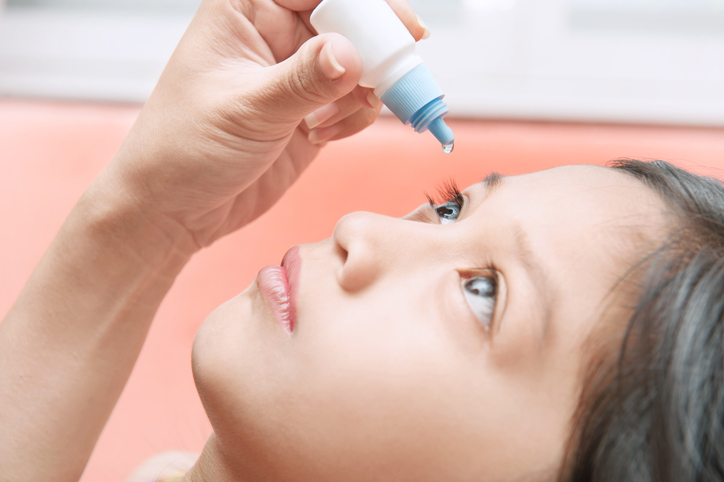 |
| Choroidal thickness measurements could help inform whether atropine concentration should be adjusted. Photo: Getty Images. |
Despite atropine drops being among the most effective interventions today to help control myopia progression, high variability exists among patient treatment responses, even in those of the same age taking the same concentration. In search of a biomarker that could serve to individualize treatment and promote better outcomes, a group of researchers performed a study looking at the choroidal thickening effect of atropine and correlating outcomes, finding that the parameter was associated with both slower spherical equivalent (SE) progression and axial elongation (AL).
Data was collected from 314 children (aged four to 12) in the Low-concentration Atropine for Myopia Progression (LAMP) study, which investigated the safety and efficacy of daily atropine drops at three concentration levels: 0.05%, 0.025% and 0.01%. Children with comorbid conditions or who received prior myopia therapy were excluded. The following measurements were taken every four months for two years following treatment initiation: subfoveal choroidal thickness (SFChT), cycloplegic SE, axial length (AL), best-corrected visual acuity, parental SE, outdoor time, near work diopter hours and treatment compliance.
The analysis showed that the choroidal thickening effect was induced by atropine among all treatment groups, but the response was concentration-dependent. Thicker choroids were found at higher concentrations. SFChT values in patients on either 0.025% or 0.05% atropine increased at the first four-month follow-up but then were stable throughout the remainder of the two years.
“The two-year changes in SFChT from baseline were 21.15±32.99μm, 3.34±25.30μm and -0.30±27.15μm for the 0.05%, 0.025% and 0.01% atropine groups, respectively,” the researchers wrote. “Over two years, increase in SFChT was associated with slower SE progression and reduced AL elongation. In the mediation analysis, 15.5% of effect on SE progression from 0.05% atropine and 12.4% of effect on SE progression from 0.025% atropine was mediated via choroidal thickening.”
Another finding from the study: patient age was found to be significantly correlated with both SE progression and AL elongation. The researchers noted that in addition to atropine treatment efficacy being concentration-dependent, it is also age-dependent; the younger the patient, the weaker the response, which is one of the reasons why younger children require a higher concentration to achieve positive treatment outcomes.
“Taken together, our data provides evidence that the choroidal thickening effect is a potential biomarker and mediator for myopia progression,” the researchers concluded. “Choroidal thickening could be considered as a reference for adjusting atropine concentrations during treatment.”
Yam YC, Jiang Y, Lee J, et al. The association of choroidal thickening by atropine with treatment effects for myopia: two-year clinical trial of the lamp study. Am J Ophthalmol. December 3, 2021. [Epub ahead of print]. |

